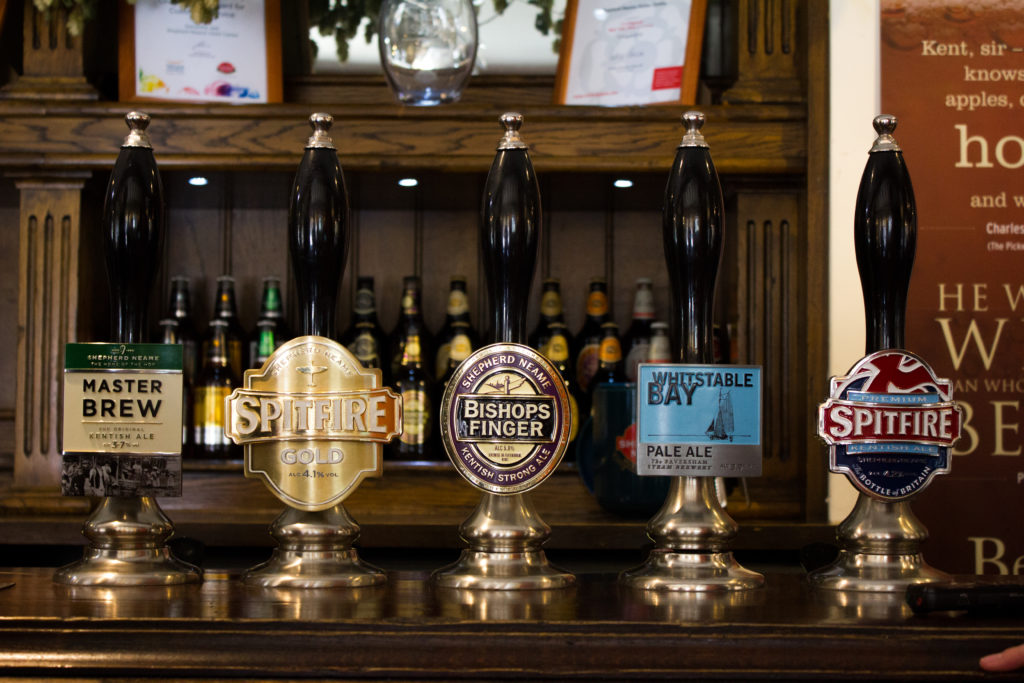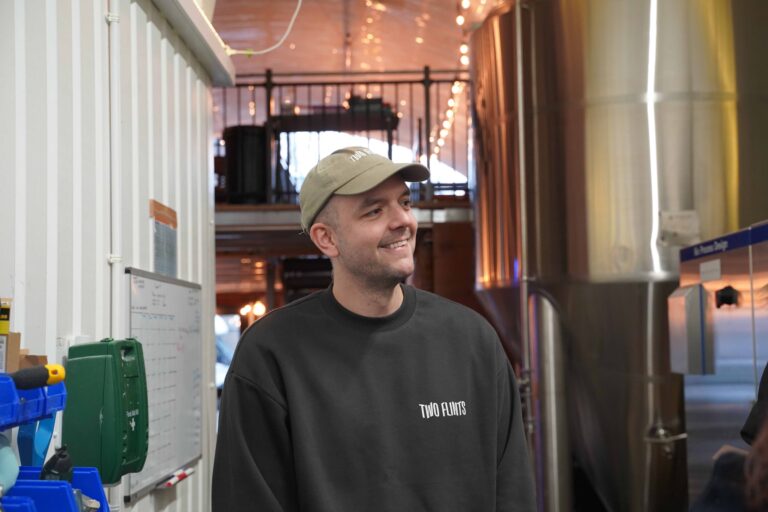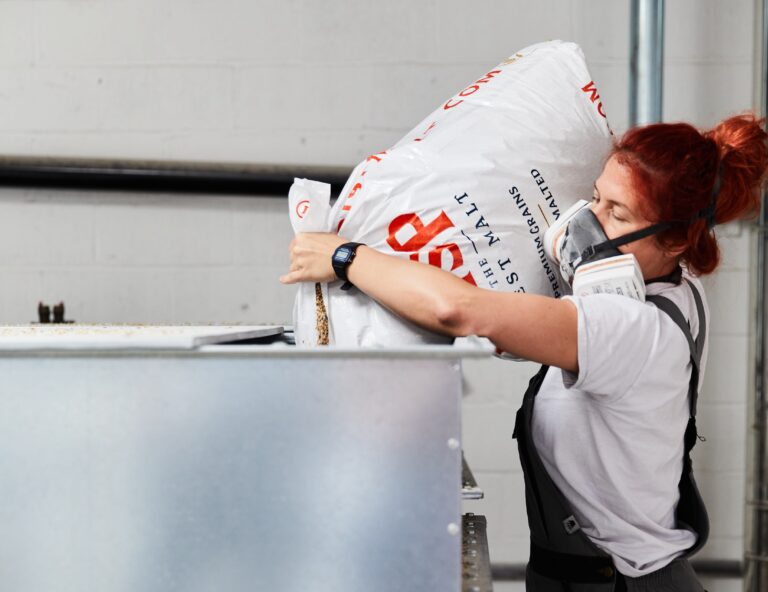“Being a brewer is a great job: you get to make beer; taste beer; go to pubs and beer festivals; visit barley fields; and stroll through hop gardens – all in a day’s work. Of course it’s not without its headaches. While our technology and systems may be state-of-the-art, we’re operating on an historic site that as never designed to cope with rigours of 21st century brewing,” explains an articulate Richard Frost. The head brewer, who worked at Marston’s for more than 30 years, joined Shepherd Neame in early 2012 and swapped the Midlands for Kent in the process.
Frost, like the rest of the team at Shepherd Neame, demonstrates a genuine enthusiasm for the beer they produce, how it is received by drinkers, and its place in the growing, wider UK brewing landscape. And since his arrival, the Faversham, Kent-based brewery is producing more styles than ever before.
 A particular point of pride for Frost is the introduction of the Whitstable Bay label of beers two and a half years ago. A project he steered to allow the brewery to put out beers that, in his own words, were less “Classically Sheppy”.
A particular point of pride for Frost is the introduction of the Whitstable Bay label of beers two and a half years ago. A project he steered to allow the brewery to put out beers that, in his own words, were less “Classically Sheppy”.
“Our biggest seller at Shepherd Neame is Spitfire, that’s our biggest brand, followed by Master brew, then then its from Whitstable Bay. We have our core range, and that’s what we focused on when I joined four years ago. But the challenge was, with the way the beer market is changing, that consumers are looking for wider choices, more choices,” he enthuses.
“And our core range are very much Shepherd Neame beers, Kentish style beers. They reflect the fact that Kentish hops were around in abundant supply around the brewery, East Kent Golding, Challenger, but very much Goldings. But we try to reflect that consumers want variety too, so with the Whitstable Bay we are doing that. The challenge was to move away from the Kentish character slightly. So the Pale in that range has Kentish Challenger for bitterness but we then add Styrian Goldings for a more delicate hop character to it,” he explains. “Its about making changes, but ones that will result in a good beer too.”
While there is also a red ale addition to the Whitstable Bay family in the works, the brewery continues to enjoy success with the expanding Spitfire range. Recently, a lager made its debut. The 4% golden beer, available on keg, has a sweet vanilla aroma, that features lager and brown malts, as well as Herkules hops.
And last year, Spitfire Gold was introduced. With this, Frost explains, there was a concerted effort to deviate from existing formulas.
“The traditional Shepherd Neame beers such as Spitfire and particularly Master Brew, are fermented to a low PG so you end with a not overtly malt character but they are more about hops. With this, it has a slightly higher PG, up at around eight or nine, with a little bit of oat coming through. We dry hopped with some Centennial that I really enjoy. It gives some citrus and tropical fruit, too. We also dry hop in cask with a little of of Saaz that gives a sherbet and freshness to it. I think the two hops work very well together.”
And with more than four decades of brewing experience, Frost has learned that when it comes to picking a beer to drink, his preference is “to not have a preference”.
“I am a firm believer on the important of the occasion,” he believes.
“So if it’s sat at home in the winter months then you’re looking a heavier beer, a sipping beer. But fast forward to Summer and it’ll clearly be a Whitstable Pale or a Spitfire Gold. Lighter, more refreshing. And I’ll happily drink lagers too. It’s strange, when I started out brewing in 1978 with Wolves & Dudley, there was a huge amount of Mild Brew around in those days. I absolutely loved mild, drank lots and lots of it, and lager was very alien to me then. But now, it’s a style I really enjoy, be it Whitstable Blonde or Asahi, actually 50% of our own brewing volume is for lager,” he recalls.
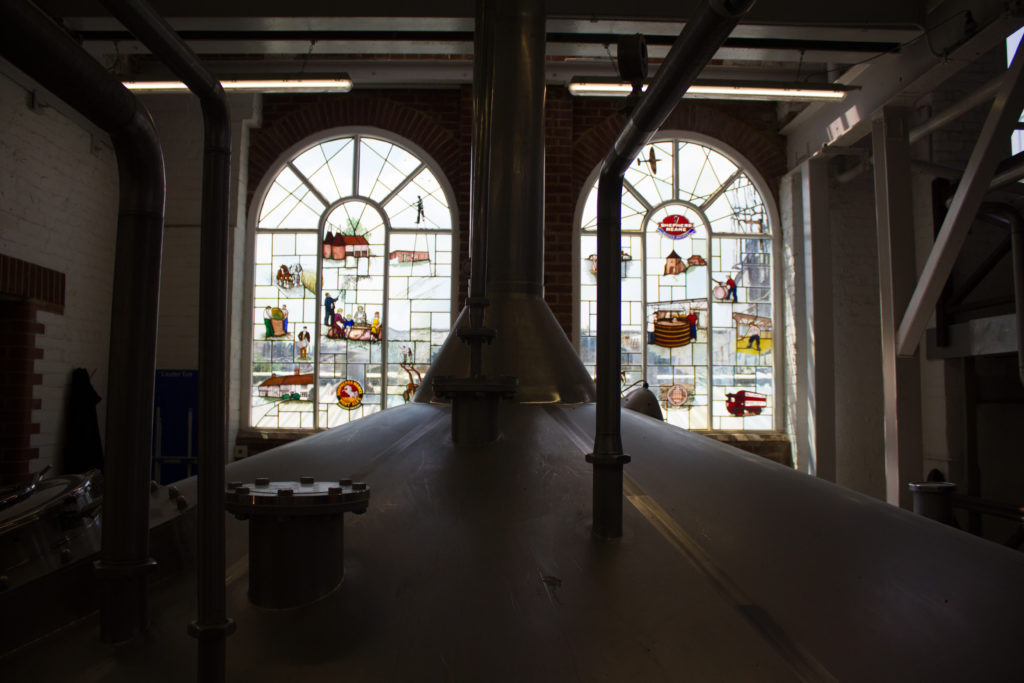 It’s lager that plays such a key part in the Shepherd Neame equation in 2016 thanks, in no small part, to the beers the brewery produce under license. Alongside Oranjeboom, the team brews on behalf of Asahi in Japan and the Boston Beer Company in the US. And it’s a facet of the business Frost enjoys being part of.
It’s lager that plays such a key part in the Shepherd Neame equation in 2016 thanks, in no small part, to the beers the brewery produce under license. Alongside Oranjeboom, the team brews on behalf of Asahi in Japan and the Boston Beer Company in the US. And it’s a facet of the business Frost enjoys being part of.
“Look at it this way. I would much prefer our brewery to be full of our own beers and from a commercial perspective, that would be a better place to be as there is always a risk with a license that the brand owner may bring it to an end for any number of reasons,” he says. “The upsides for me is that we get other brewers coming over to the brewery and we get to tap into their expertise. When you meet other brewers, you always learn something. Yes, brewing has been around for a very long time, but there are always subtle nuances to discover.”
Shepherd Neame agreed the deal with the Boston Beer Company to brew the world famous beer under licence in Faversham in late 2011, the first time that it has been brewed outside the USA.
Frost explains: “Boston Lager is brewed in a very traditional way matching brewing techniques used in Germany for many centuries. The first stage of the process is a decoction mash where part of the mash is boiled and then added to the rest of the mash to bring the whole up to the correct temperature for starch conversion. German hops are used in the copper to give bitterness and dry hops are added to the fermentation vessel to give a delicate hoppy aroma to the finished beer.
“Another traditional German technique, krausening is used during fermentation – this is where a small proportion of actively fermenting wort from a new brew is added to an older brew that has reached the end of fermentation. The process is carried out at low temperature and is designed to reduce the levels of diacetyl, a compound produced by yeast that has a butterscotch aroma. The beer has a very long maturation period of 28 days before it can be filtered and packaged – this meant that we had a long wait before we could assess the effect of the changes made to each trial brew.”
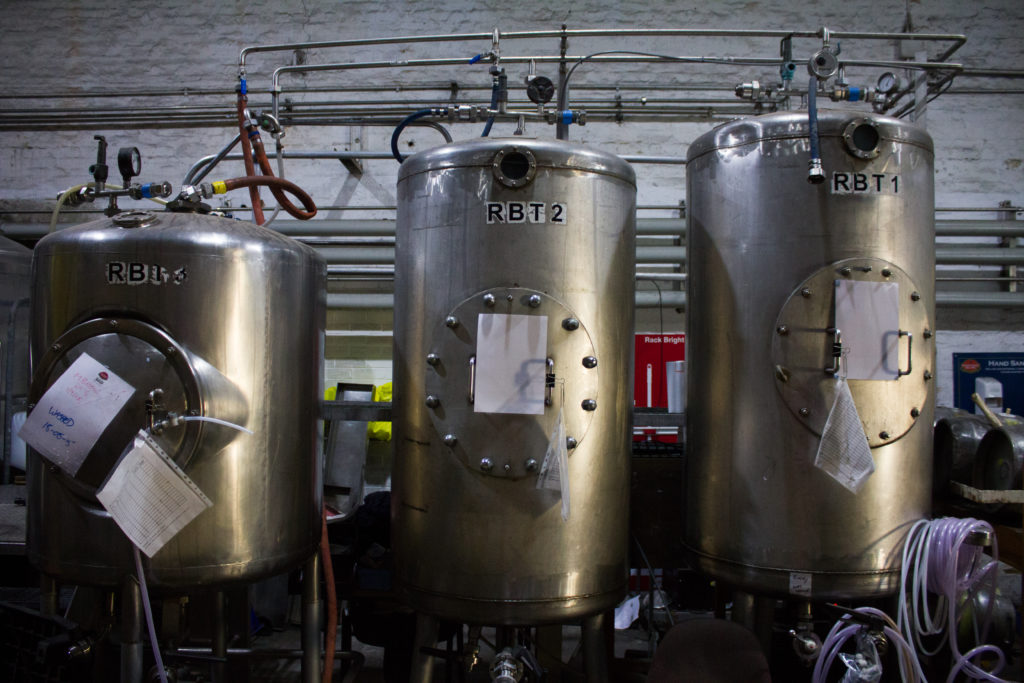
A good reputation for consistency in the UK is a big deal for the US firm.
“We have a conference call every week. Every Wednesday, 2:30pm without fail. Every single beer we brew for them that sits in FV for maturation, we go through the full analyses for. The whole lot. It’s a real, detailed approached and until three months ago, their president, Jim Koch would taste every batch,” he says. “We send samples, they have two big breweries, one in Allentown, PA and one in Cincinnati and they would put the beer through both sensory panels at both. But three months ago, he finally said he didn’t need to taste the beer anymore. That was our man from Delmonte moment!”
This, is a marked difference from the approach adopted by Asahi. Not that quality is any lower down the agenda for the Tokyo-headquarted business.
He explains: “We learn from them too. It’s refreshing, and very, very clean. They actually want the beer to have very little flavour. We had a challenge once where our scores were being marked down because our version was too hoppy, as their tasters could actually taste hops.
“It’s very interesting though in the way that the two businesses tackle quality. Asahi tend to leave us alone. We send over samples once a month where they carry out all of their analyses and put it through their sensory panel and give us feedback. Once a quarter we have a review with them over here so they can deliver pointers and ways they think we can improve.
“We brew a range of international beers at Shepherd Neame so we are used to working with brewers from other countries but one of the really rewarding aspects of this type of project is that we always find there’s something new to learn about this fascinating process.”
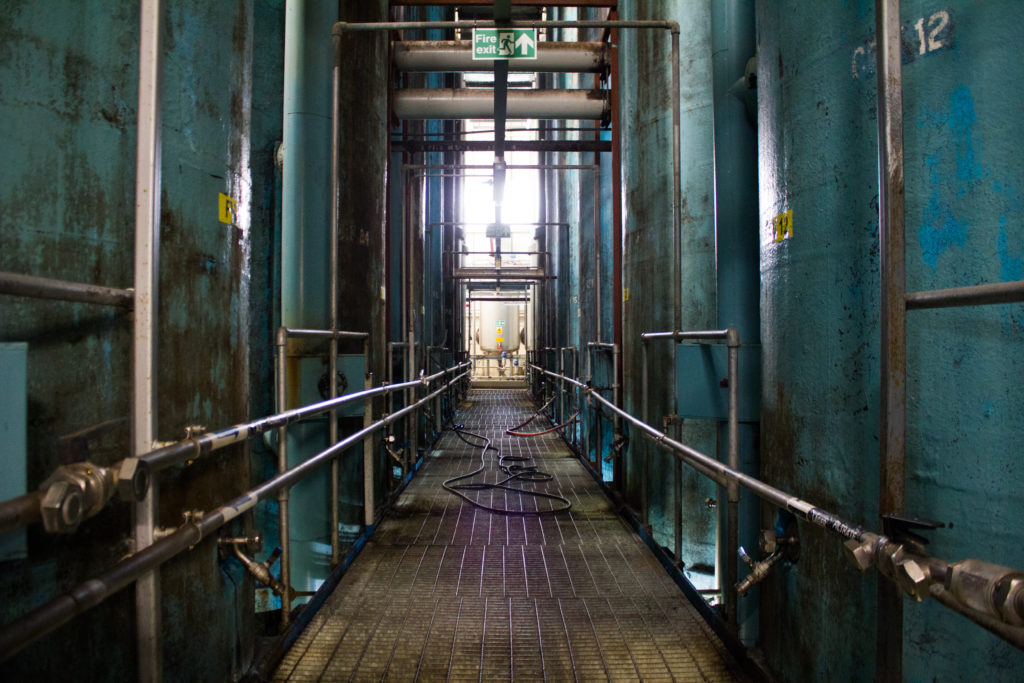 It’s this desire to experiment that drives the beers produced on the brewery’s significant pilot kit. With a team of three shift brewers, they collaborate to roll-out beers that would not fit within the traditional parameters of other Shepherd Neame brews. Under the No.18 Yard Brewhouse moniker, the brewery has rolled out styles such as a cherry porter and more recently, its Hog Island East Coast Pale Ale. The latter derives it name from an area of the brewery site that was previously a small island in the town’s creek. This has become landlocked over the history of Britain’s oldest brewery.
It’s this desire to experiment that drives the beers produced on the brewery’s significant pilot kit. With a team of three shift brewers, they collaborate to roll-out beers that would not fit within the traditional parameters of other Shepherd Neame brews. Under the No.18 Yard Brewhouse moniker, the brewery has rolled out styles such as a cherry porter and more recently, its Hog Island East Coast Pale Ale. The latter derives it name from an area of the brewery site that was previously a small island in the town’s creek. This has become landlocked over the history of Britain’s oldest brewery.
While previous additions to the No.18 Yard Brewhouse collection have featured ingredients such as chocolate, chilli and mulling spices, the Pale Ale eschews Shepherd Neame’s tradition for using Kentish hops, instead opting for Boadicea, Amarillo and Cascade hops.
“Hog Island is a really exciting addition to the No.18 Yard Brewhouse collection. It is a refreshing, zesty beer which retains the malty character of the typical East Coast pale ale”, says Frost. “We have a great deal of experience around this brewery, it makes sense to use it, alongside our younger brewers, to create these new beers.”
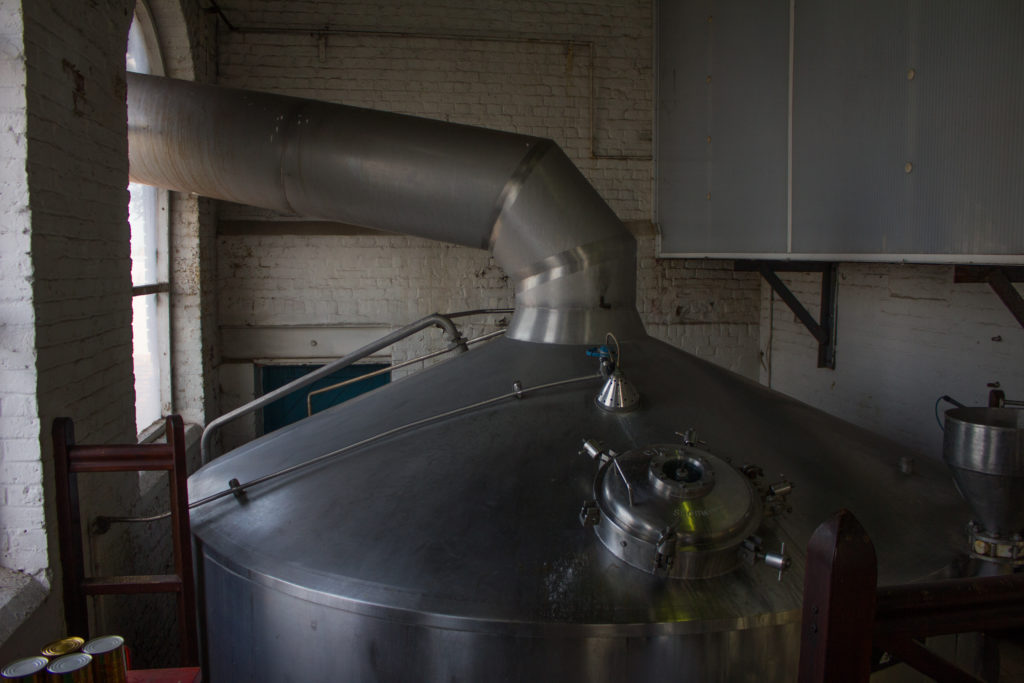
To have even only a single takeaway from the team at Shepherd Neame is that their respect for tradition is matched only by their desire to introduce new styles, as much as the confines of being a large brewery will allow them.
And its the brewery’s irrepressible communications manager John Humphreys, and tour guide for the day, that ablu demonstrates the passion the team at Shepherd Neame have for the old, and the new.
 “In the 60s, there was an old guy here who was the brewery’s production director. He was from Sunderland, I think.
“In the 60s, there was an old guy here who was the brewery’s production director. He was from Sunderland, I think.
“During his time also as a shift brewer, he earned a bit of extra money on the side as he had a HGV licence. He delivered to pubs late on on Saturday morning. Brewing first then heading out for deliveries after that.
“Once he went to a working men’s club that was part of a local pit. There was actually a beer tank under the ground, almost like what many big companies have now,” he explains.
“So he’d drive there, plug it in and fill it up. But instead of rising as he was filling up, the meter was dropping. Regrettably and apologetically he went in and told the staff the bad news that they must have a leak in their beer tank. ‘Oh no, he’s told’. It’s shift change at the local pit. He went up to the bar to be greeted by 30 pumps, each one being pulled and pulled. With the workers come down the lane, the door propped open, you’re looking at around 500 pints being drunk in that short session alone.
“Incredible, just incredible,” he muses, as if he was there to see it himself. And it’s that enthusiasm of the old, married with the push of the new, that continues to ensure that Shepherd Neame remains in safe hands.

